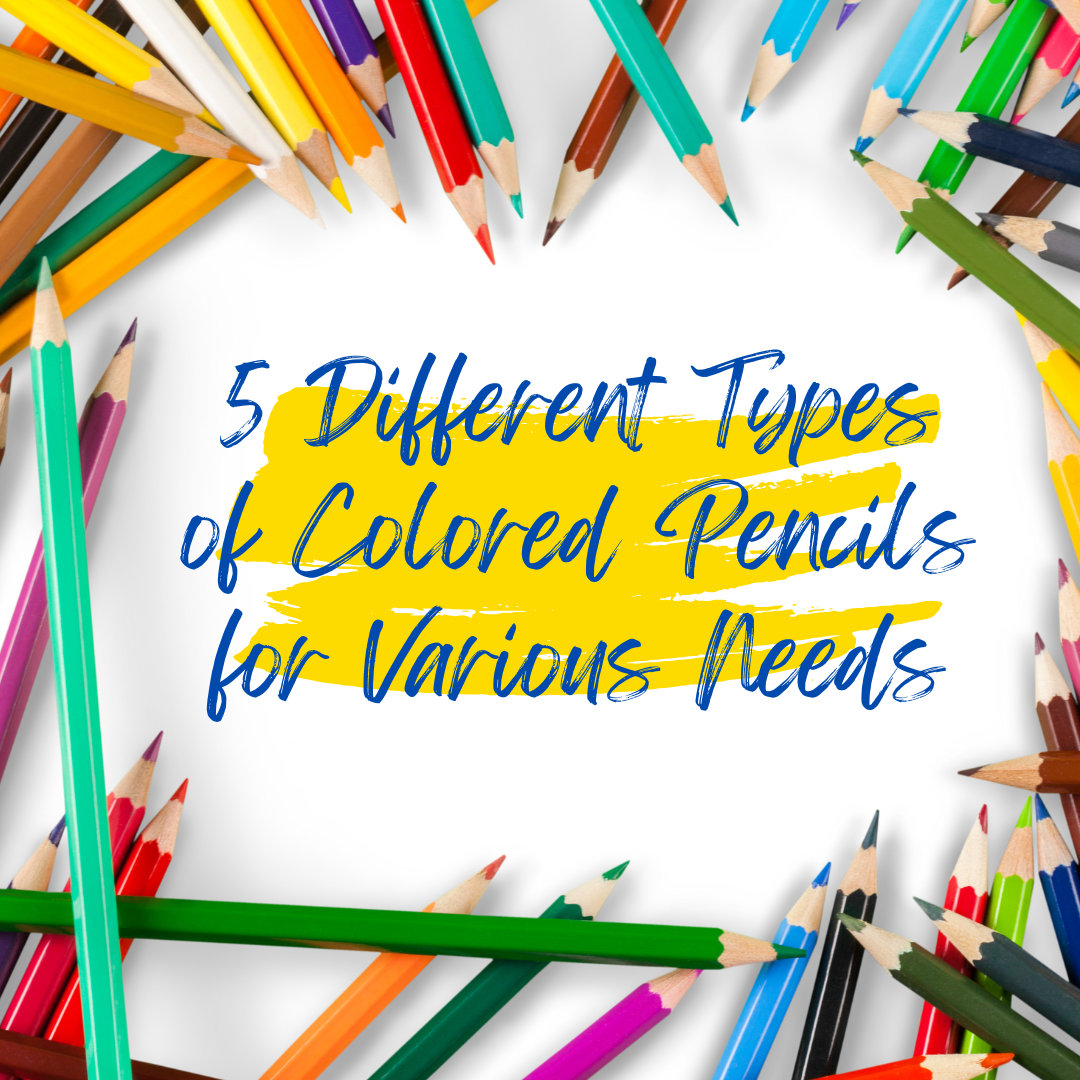Learn the Different Types of Pencils That Are Out There and Find Out Which Type You Should Choose
Do you know what the world’s most popular artist’s medium is? It’s not oil paint, or acrylics, or even watercolor. It’s a colored pencil! Colored pencils are a versatile and affordable art medium that can be used for everything from drawing to painting to mixed media art. There are many different types of colored pencils on the market today, each with its own unique properties that are better than others for certain tasks. In this article, we will explore some of the different types of colored pencils, what makes them unique, and the pros and cons of each type so that you can make an informed decision when purchasing colored pencils. We will also provide tips on how to choose the right type of colored pencil for your needs. So whether you are a beginner artist or a seasoned pro, read on to learn more about colored pencils!
Types of Colored Pencils
⦁ Wax-based Colored Pencils
The most popular colored pencils are often wax-based. The wax helps to give the pencil a smooth texture and prevents it from drying out too quickly, which is good for preserving pigment and improving its flow. The wax also makes the mark stickier, so you can put down multiple layers without worrying about smearing or peeling off. The only drawback is that it can create a hazy white buildup called wax bloom on your finished piece. This phenomenon, which is caused by an oxidation process, occurs mostly in darker colors and usually takes days to appear. But don’t worry as you can prevent wax bloom by dabbing a clean cloth on the colored surface before applying more color to it. You can also apply some fixative on the surface of your artwork after it is finished.
Mr. Pen Colored Pencils:
http://www.amazon.com/dp/B08FRPVDSZ?maas=maas_adg_FAFEBE4BF484292C575CD1B59CA67721_afap_abs&ref_=aa_maas&tag=maas&ref=myi_title_dp
Mr. Pen Colored Pencils:
http://www.amazon.com/dp/B086R45D39?maas=maas_adg_A4757BC0BBAFC54953D0F8019BF91B4F_afap_abs&ref_=aa_maas&tag=maas&ref=myi_title_dp
⦁ Oil-based Colored Pencils
Oil-based colored pencils use oil as an adhesive and distributing agent for pigments on paper; therefore, they exhibit a bit more consistency. Oil-based pencil leads are a little harder than wax-based leads, but they are still considered soft and smooth pencils. Due to the slightly firmer lead, oil-based pencils last longer as their leads resist more against breakage and need sharpening less frequently. Despite being pricier than other types of pencils, oil-based pencils do not necessarily perform better than other types and still have a few downsides. They can be more difficult to erase, and you might have a harder time preventing them from smearing.
⦁ Water-soluble Pencils
Although they can be used dry as regular colored pencils, this type of pencil can also act as watercolor since they contain a water-soluble binding agent that allows for the thinning of pigments with water. You can easily use a wet brush or sponge to blend the colors and create a watercolor painting. You can also use them in other ways like dipping the tip of the pencil in water to create more saturated effects or painting with dry pencils on a wet piece of paper.
⦁ Pastel Pencils
Unlike previously mentioned types of colored pencils that all create transparent layers of colors, pastel pencils leave an opaque, dense effect on paper. The lead of pastel pencil is made of the same material as in pastel sticks. While pastel sticks are soft, pastel pencils take advantage of relatively harder leads to avoid crumbling or breaking while using. You can both use them alone or along with pastel sticks, pastel sticks for filling larger areas and shapes, and pastel pencils for adding more delicate details.
⦁ Woodless Pencils
Woodless pencils are completely made of a colored lead core rather than having a wooden casing around a thin lead. Woodless pencils feature a lacquered cover around the barrel to prevent any color stains on hands. These pencils are perfect for coloring large areas in a shorter time. One of the downsides of this type of pencil is that due to their unique design, they’re heavier than regular pencils. Also, each time you sharpen these pencils, a great deal of lead is wasted.
Factors to Consider When Buying Colored Pencils
⦁ Consistency
Probably the most important factor that directly affects your experience with colored pencils is the consistency of the lead. Consistency is basically how hard or soft the lead is and is determined by the type of material, the quality of the material, and the brand of the pencils. Artist-grade pencils are usually softer which is because they contain more pigment and less binding agent. A lot of artists prefer soft colored pencils as they are smoother and create brighter colors that blend well. One of the disadvantages of soft colored pencils is that you have to sharpen them more frequently.
Student-grade colored pencils, on the other hand, are mostly hard since they have less pigment and more binding agent. Artists sometimes prefer using hard colored pencils to draw fine lines and create detailed shapes. Using hard pencils has a few drawbacks: requiring more energy to apply color, a more difficult blending process, and damaging the paper texture.
⦁ Color Range
Student-grade pencils have a narrow range of colors and come in a limited number in a package while artist-grade pencils are available in a wider variety of colors and larger packages. In addition, artist-grade pencils can be bought separately so you can always replace your favorite old pencils with new ones or expand your color palette by adding brand new colors.
